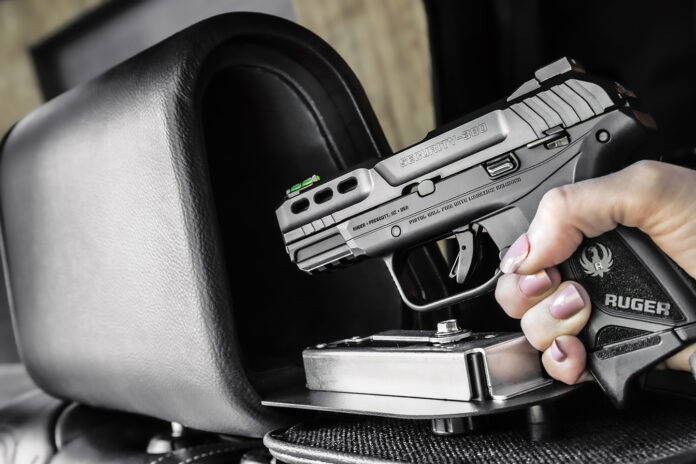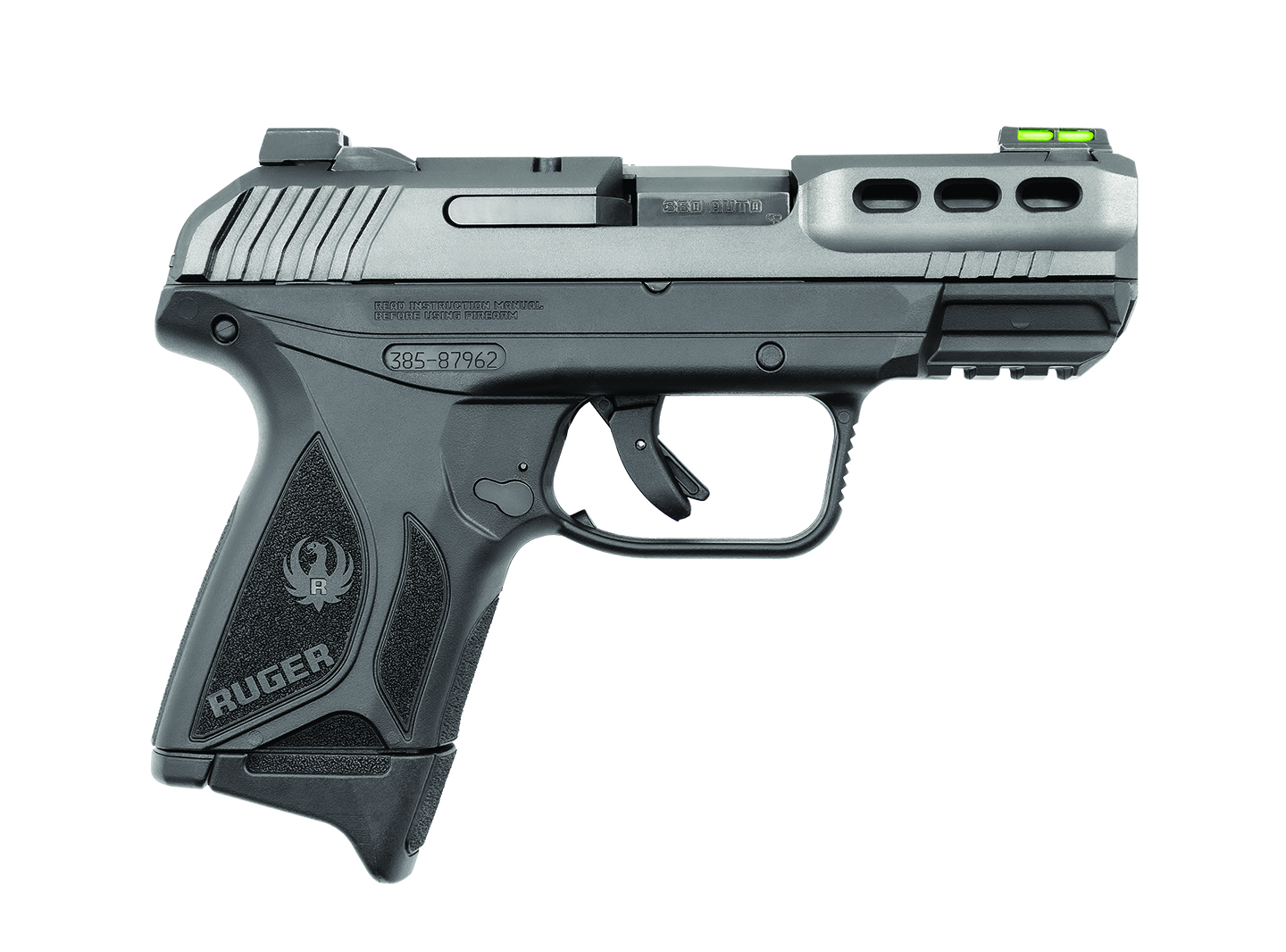Ruger Security-380
By: Massad Ayoob
Photos By: Ben Battles & Gail Pepin
Picture the value-priced Ruger Security-9 in .380, easier to manipulate and shoot, with 15+1 capacity.
About five years ago, Ruger came out with their Security-9, a plastic-ish frame 15+1 9mm. It was reliable, budget-priced, and sold well. Ruger’s biggest carry auto hit has been the LCP .380, which must have set a record for the speed with which it broke a million guns sold. They’ve also had good luck with their LC-380, designed for mild recoil and easy slide operation, and followed that with their Lite-Rack iteration of the LCP. Most recently, they’ve sold the hell out of their LCP-Max, which is essentially a little pocket .380 that can take a twelve-round magazine.
We should have seen it coming. Each of the above is a case of “it sells because of its features,” so why wouldn’t Ruger bring all those elements together – well, except for the tiny size and weight of the LCP – in a single new pistol? They have. Behold the Security-380.
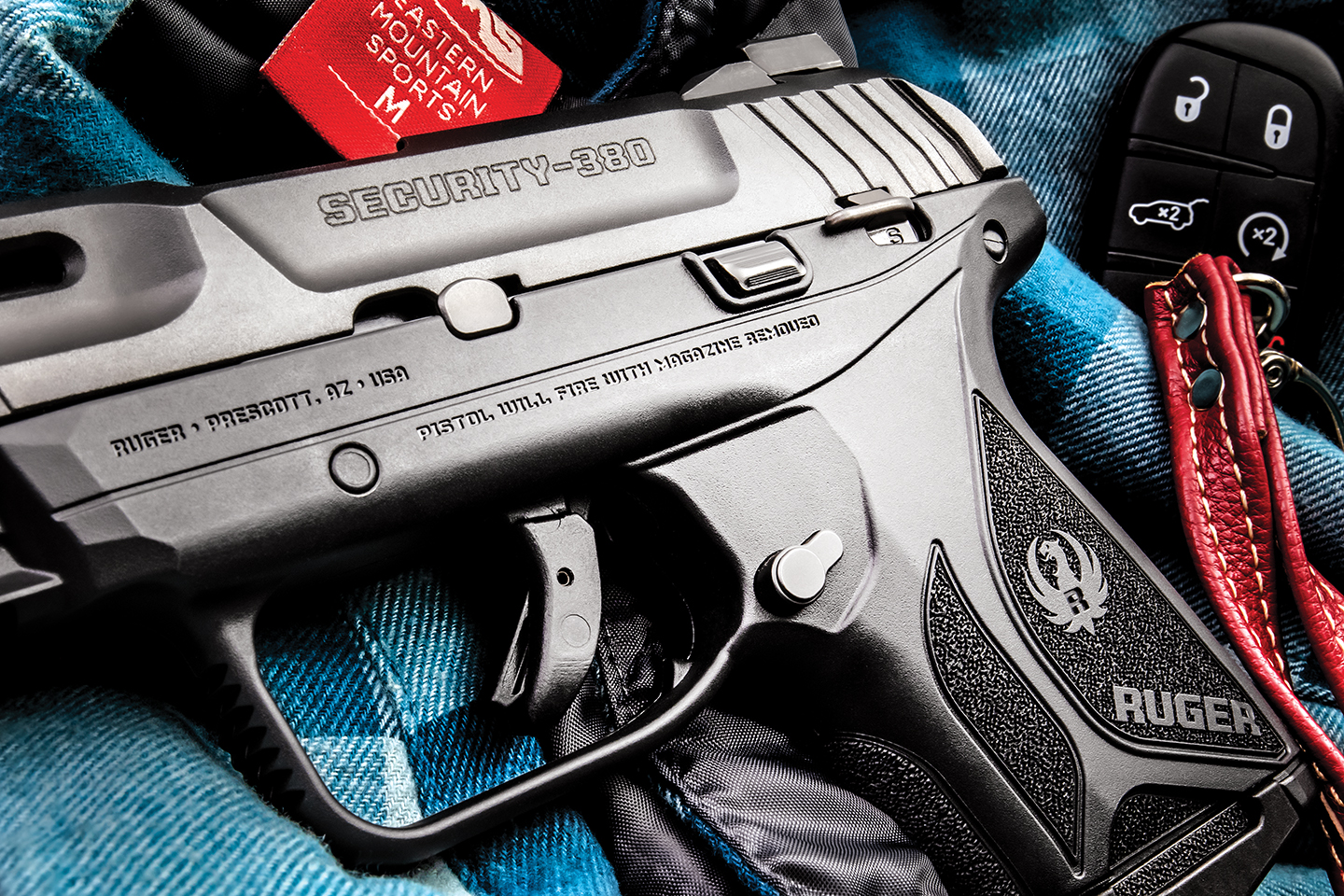
First Look
The original Security-9 was designed to compete directly against the uber-popular Glock 19 with the same 15+1 capacity and size-n’-weight format. It even fit well in an Aker Flatsider hip holster for a G19, as did the Security-380, with its slide width of barely over an inch. It was comfortable to carry, but definitely holster-size, not pocket-size. In short, it’s not competing with Ruger’s own LCP series of .380s. Different .380s for different needs.
The concept of the Security-380 is a pistol that allows all the fingers to wrap around and take a solid hold to help weak hands and wrists minimize recoil. The magazine for its 9X17 mm rounds is the same overall size as the one for the Security-9’s 9X19 cartridges, and to allow for this, Ruger has a spacer in the spine of each magazine. In keeping with the ease-of-use design parameters, each magazine was easy to fill all the way to total capacity by hand without a loading tool. It came with a 15-rounder with an extension sleeve and a 10-rounder with a little finger flange. I shouldn’t wonder that they’ll come out with a flat-bottom “tenner” for those who would rather have a little better concealment profile and tuck their little finger under the butt when shooting, but time will tell.
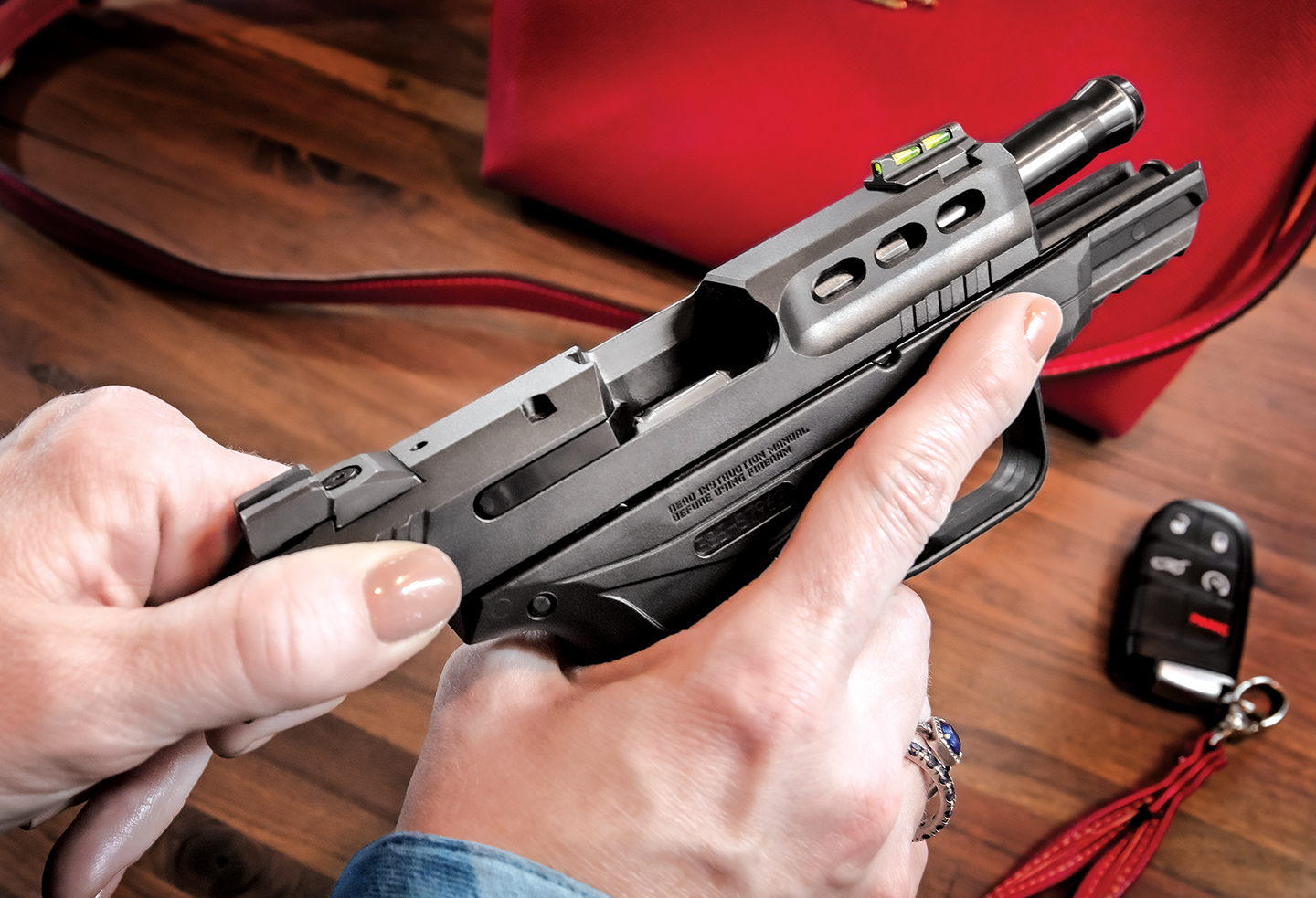
We elderly cripples have a lot of medical bills, and many people with debilitating ailments or injuries are on fixed incomes. The low MSRP of $369 again fits the intended user profile here, and careful shopping may get you a better price than that.
Gun In Hand
Some have described the Security’s thumb safety as working like a 1911’s, and in actuality, it does, and it doesn’t. It does in that it’s frame mounted; down is “fire” and up is “safe”; and it’s located in roughly the same spot. The difference is that while the 1911 thumb safety’s pivot point is at the rear of the lever, the Ruger Security’s pivots from the front.
Good news and bad news with that. The good news is that a shooter’s thumb is unlikely to unintentionally bump the lever to “on safe” at the wrong time. The bad news is that, while it’s easy and reflexive for a right-handed shooter and particularly a regular 1911 user to off-safe, it’s much more awkward to “on-safe.” Everyone on the test team had to either turn their hand on the gun and push upward on the lever with the ball of the shooting hand thumb or use their other hand to on-safe the Security-380.
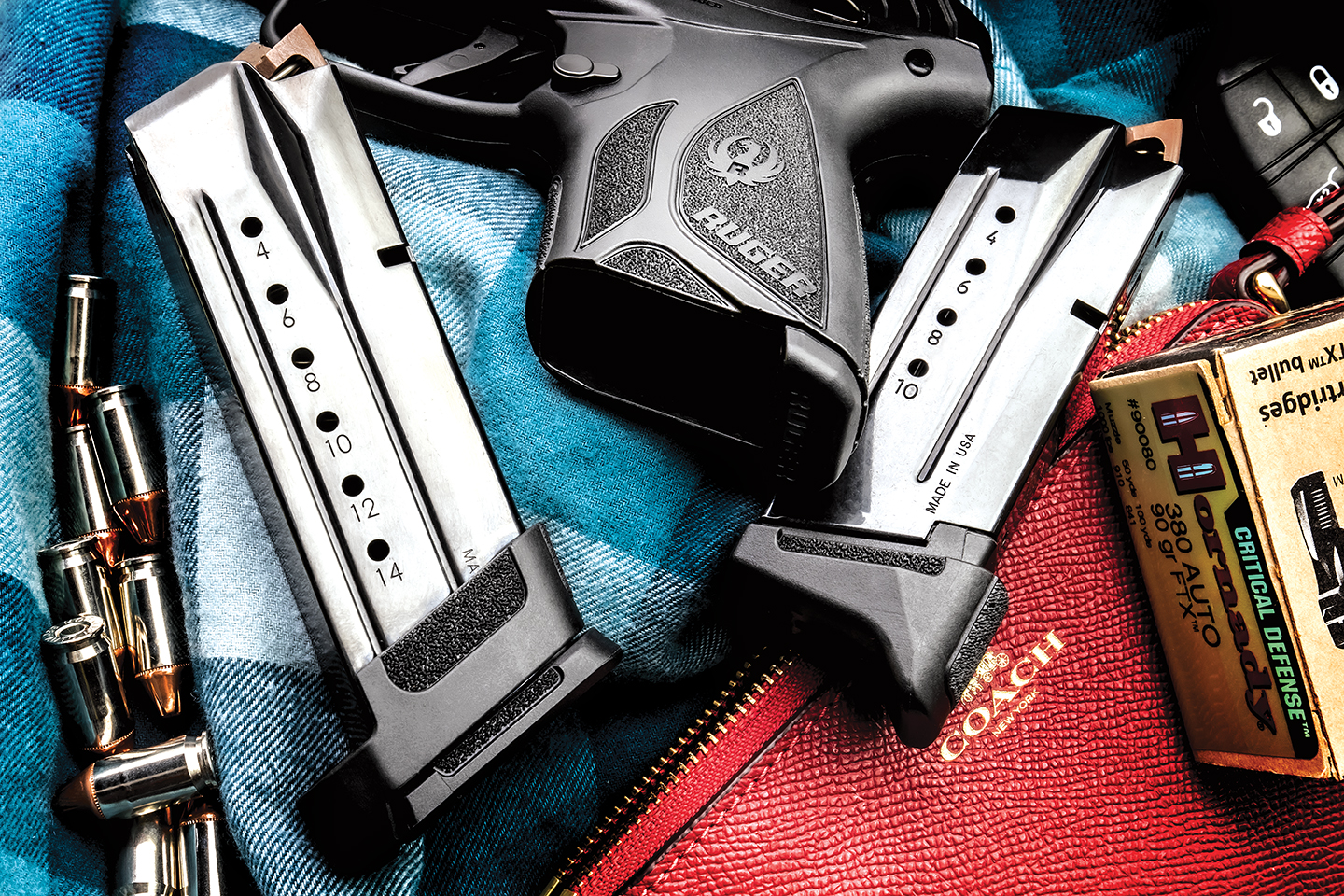
Though the pistol is hammer-fired (with a hammer that our digits can’t reach with the gun assembled), the trigger stroke feels much like a striker-fired gun. There is a fairly long take-up before the finger meets more than token resistance, followed by a fraction of an inch of roll and then a pretty clean surprise break. The reset is relatively long. Target shooters won’t like it, but these are characteristics suitable for a “threat management” situation: armed citizens and police alike are far more likely to end a violent encounter by taking the criminal suspect at gunpoint than by shooting them, and in a high state of body alarm reaction our bodies shunt blood away from the extremities and into internal organs to fuel up for extreme survival exertion. This reduced blood flow to the fingers numbs them and can keep us from realizing that our finger may have migrated to the trigger unintentionally. The longer pull allows even a peripherally vasoconsticted hand to feel that happening in time to keep us from a potentially tragic premature/unintended discharge. In other words, a feature and not a bug. From the toe of the trigger, where the crime lab may weigh an evidence gun, the average pull was 5.65 pounds.
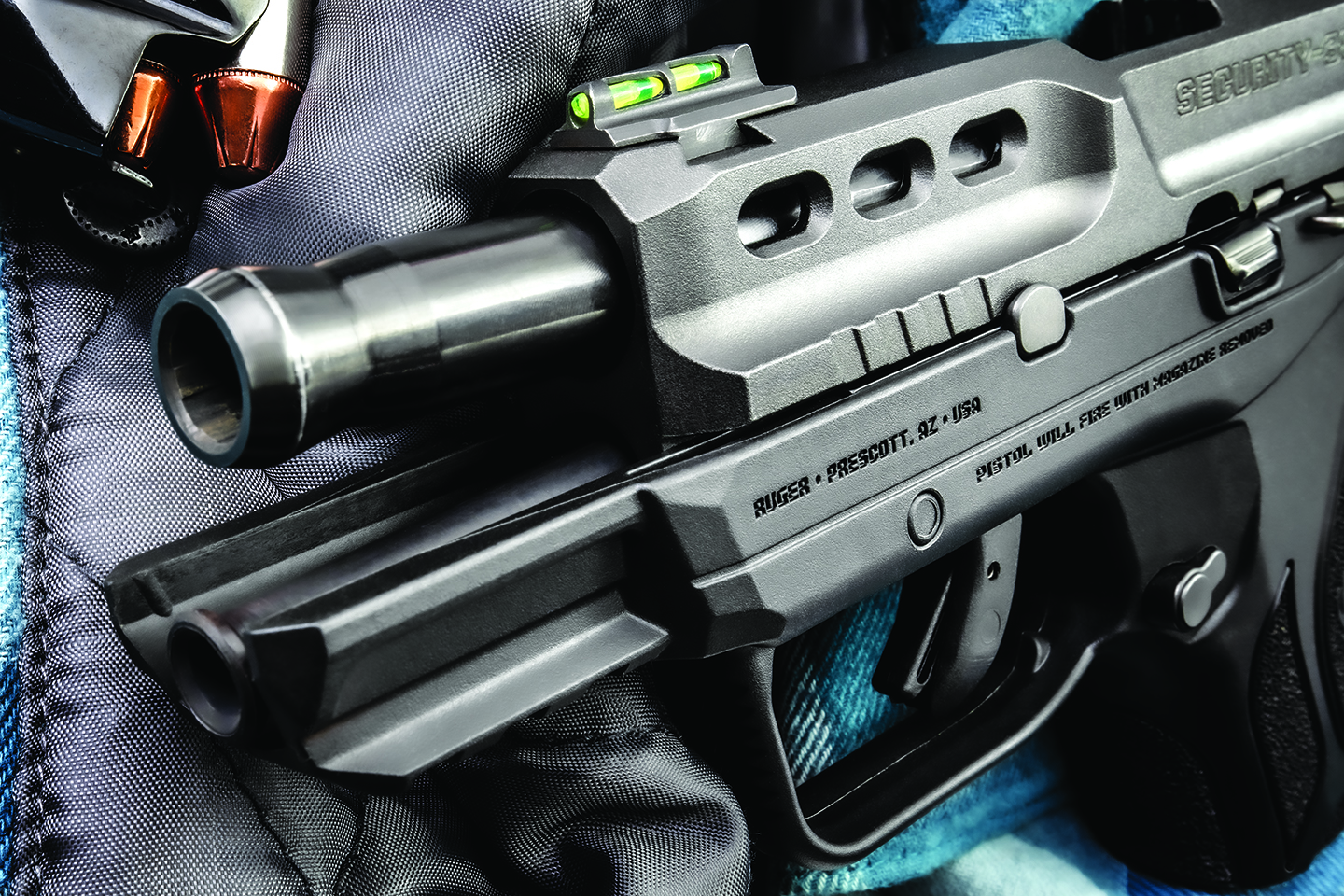
Target Users
This is clearly a “G-Gun,” intended for gals, geezers, gimps, and (under responsible adult supervision) gyermekek. (“Gyermekek” is Hungarian for “children,” and if you think I had to reach for that word, well, you haven’t gone looking for a synonym for “kids,” which begins with a hard “g.”)
This pistol lived up to the Lite-Rack part of its name. From the young boy onward, the slide was easy for everyone to rack: the grandma, the great-grandfather, and the petite mom, all of whom could jack the slide of the Security-380 with thumb and forefinger, even though all knew that wasn’t the most efficient way to perform that operation. The easy-to-work internals are assisted by small “wings” at the back edge of the slide, too low-profile to adversely impact concealment but palpably helpful to the support hand.
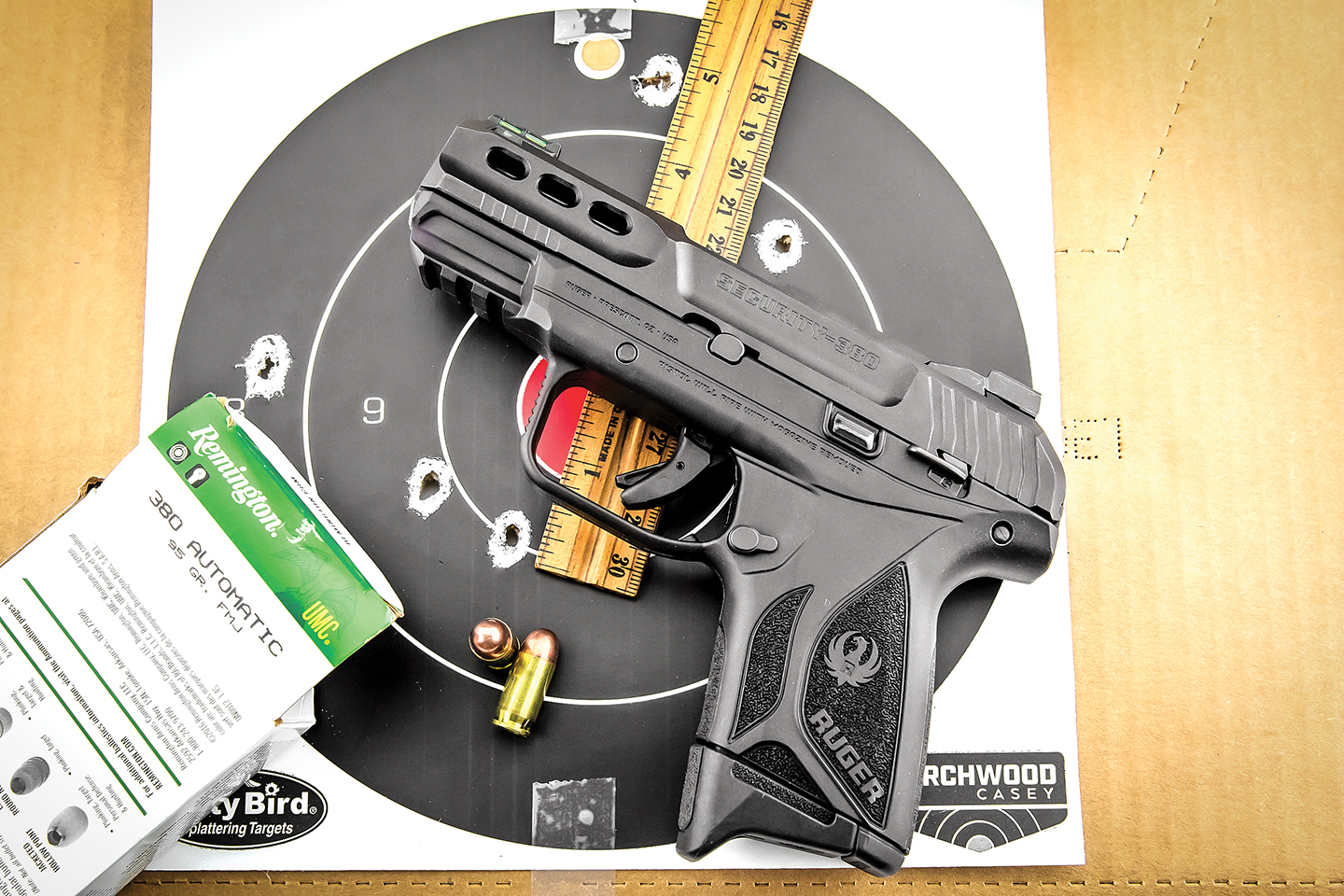
On the Range
Tiny, ultra-light pocket-size .380s have what many find to be unpleasant recoil. The Security-380 is the opposite. I’m not exaggerating when I say it feels like shooting a louder .22. Grandson Will weighed only 80 pounds and was on only his third time shooting a pistol when he tried the Security .380. He loved it and shot it remarkably well.
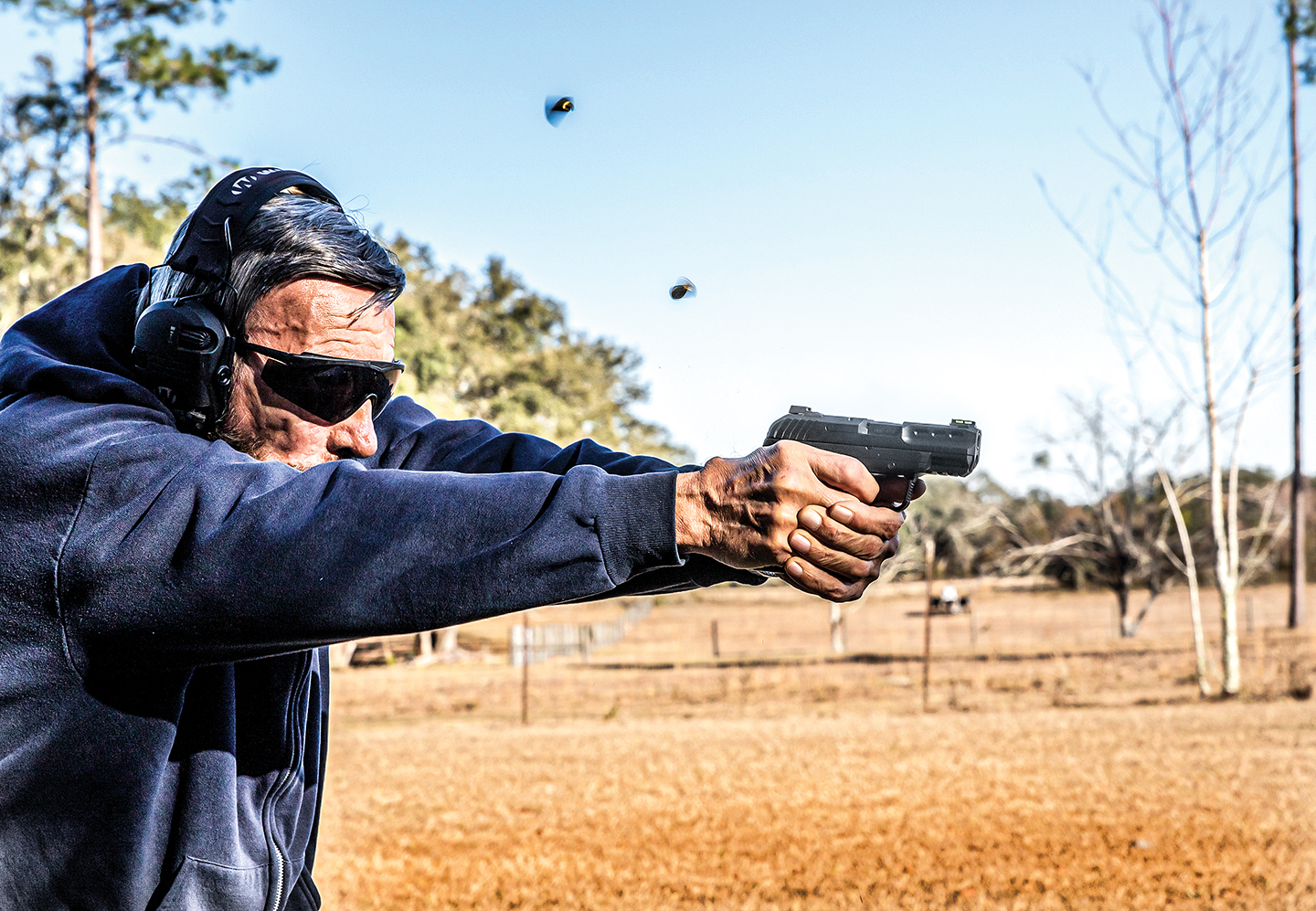
Accuracy? There are Ruger handguns that have won national titles. This is not one of them. I found its older sibling, the Security-9, to have mediocre accuracy when I tested it on the 25-yard bench. It seemed to be extremely particular about what ammo it liked in terms of accuracy. The best group from the Security-380 came from Remington-UMC 95-grain full metal jacket, which has won Pocket Glock matches for me out of a Glock 42 .380 in GSSF competition. The overall group was 4.35″, with the best three of five shots in 2.85, centered at point of aim. For a carry load, I chose Hornady’s 90-grain XTP hollow point, which seems to give the best balance of expansion and penetration in ballistic gelatin testing of .380 ACP loads. It put three shots at point of aim in a 2.05″ cluster but two more in a 3/4″ space that extended the whole five-shot group to 8.5″. And a third load, MagTech FMJ that usually groups well, was even worse with this pistol. With a few hundred rounds fired, the only malfunction was a failure to feed early in break-in during an administrative load from slide-lock.
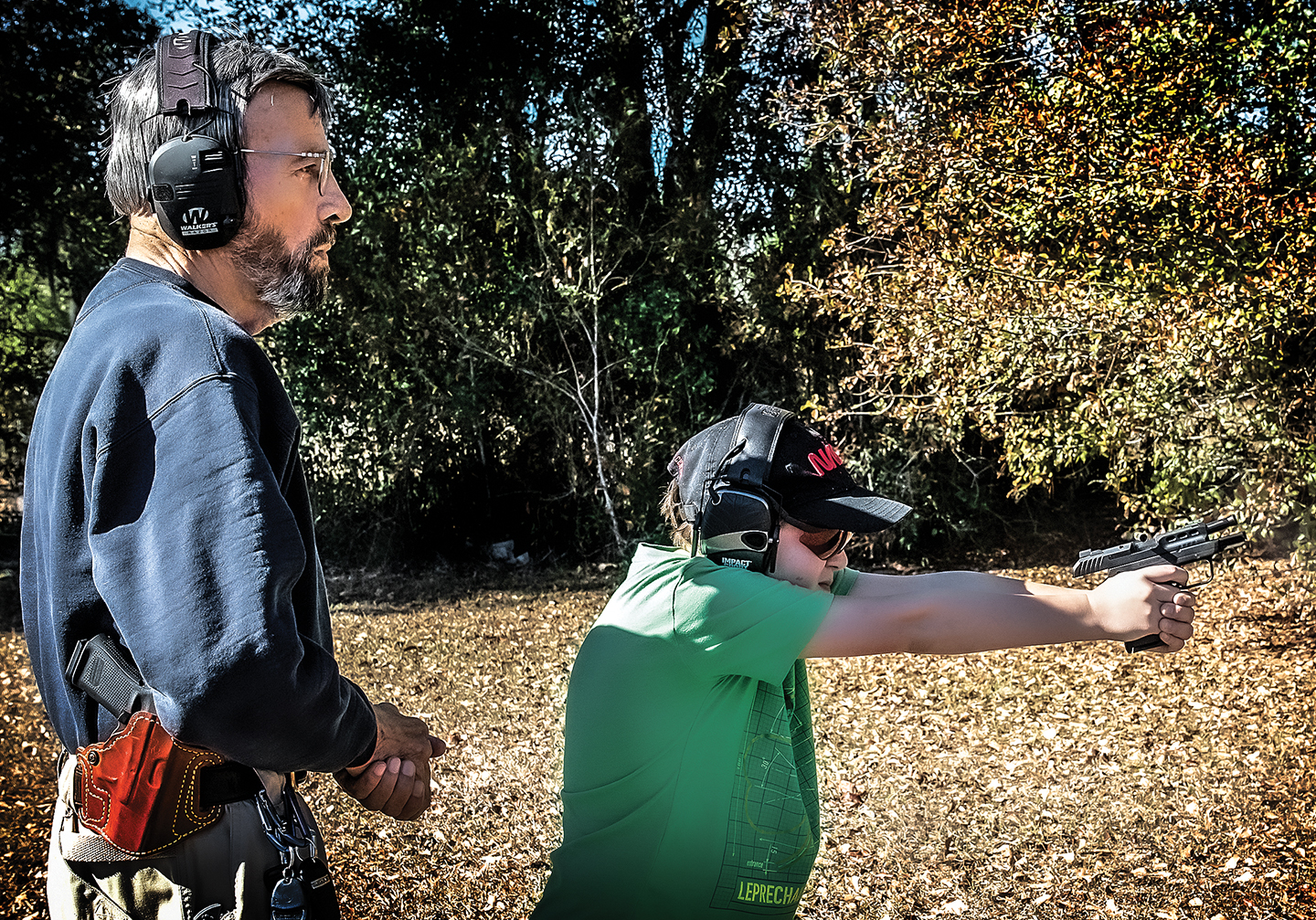
Bottom Line
The .380 ACP round is at the marginal lower end of acceptable power in a self-defense gun, but for the shooter with limited hand/arm strength or just sensitive to recoil, it beats the hell out of no gun at all. It’s far from a target pistol, but the ease of manipulation and shooting delivered by the Ruger Security-380 allows it to fill an important niche in the handgun world. Check it out at your nearest dealer, or for more information, contact Ruger; Tel.: (336) 949-5200; Web: www.ruger.com
















